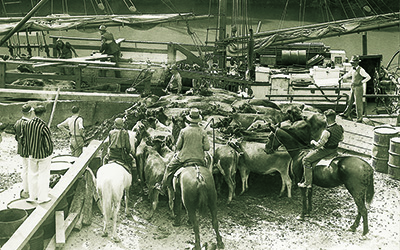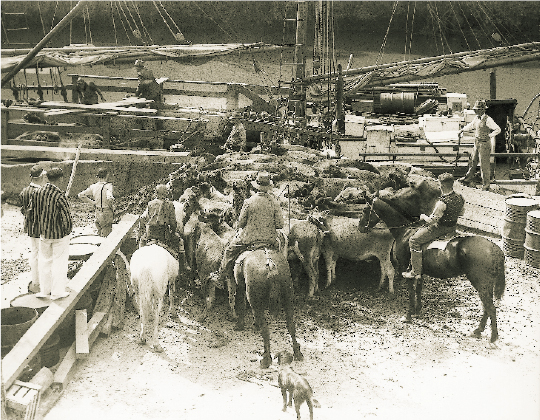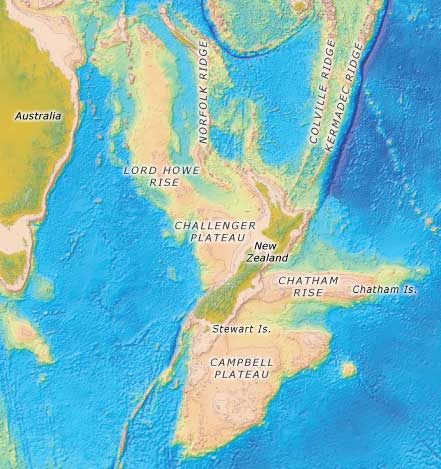Sea-level rise means dredging up the future


Future of a Flooding Landscape: Scows once formed the most reliable transport for many of Northland’s farmers. Sea-level rise and limitations on fossil fuel combustion will see their return, albeit with hulls of radiata pine like the Jane Gifford’s today, rather than her original of kauri. photographer Tudor Collins
Writers urging climate action invariably claim that, although the situation is dire, by acting now, warming’s worst consequences can be avoided.
But it is probable that it is already too late to prevent total ice-sheet loss and sea-level rise of about 80 metres. The big unknown is the timeframe, but this is possibly little more than a century. It could be much less, but without another decade of satellite measurements, it is too soon to say.
The pivotal exercise involves starting with the post– ice sheet scenario, setting aside the question as to when that might be. A crucial metric will be total food production, optimised for survival. The arable land area of Aotearoa will be disproportionately reduced, as much of it is within tens of metres of sea level. Whereas Australia sits atop continental crust averaging 40 kilometres thick, over‑stretched continental Zealandia is less than half that. The thicker the crust, the higher it floats on the Earth’s magma. If it weren’t for the Australian and Pacific plates electing to fault where they did, and piling on top of each other, the failed continent of Zealandia would still lie beneath a shallow sea.
Consequently, most of the Waikato will be submerged, along with a significant area of Manawatu, Canterbury and Southland. In contrast, Taranaki loses little—very much like Australia in that respect.
Although Aotearoa is likely to retain a climate conducive to growing food, worldwide, considerable areas will be lost to food production. Dust bowl conditions will prevail in significant areas. Regardless, reasonable estimates of the world’s reduced food production can be made, and thus the population that could be fed can be calculated.
The world currently has too little food to come and go on, with a population nearing 7 billion. A crude guess might be that with the loss of the Netherlands and Norfolk, the Nile and Ganges deltas, and other low-lying bread baskets and rice bowls too numerous to mention, and the aforementioned Waikato, that a population of 5 billion or fewer might be fed, by Optimum Population calculations.

Thin‑Skinned: The wonder of the eight continent, Zealandia, is that it is 93% and not 100% drowned, given the thinness of its crust. map GNS Science
Given that the current growth rate will lift the population to 12 billion, three actions are necessary to avoid global misery:
- A reduction in the birth rate
- The relocation of cities currently at less than 80 metres elevation
- Optimising food production above 80 metres.
As to a timeframe for this unprecedented logistical challenge: By the end of the century, would seem moderately prudent. However, this deadline would need to be brought forward by quarter of a century, should the doubling period for ice sheet melt prove to be five years.
The brutal benefit of working back from point of maximum sea-level rise is that it allows strategies proposed to be measured against business-as-usual. A shortfall in food that would leave 7 of the world’s 12 billion without food (the world’s entire current population) is not an option.
If there were resources and energy to burn, the task would still be epic. But if the reconstruction is fossil‑fueled, it risks rendering the atmosphere permanently hostile to life. That suggests that rather than risk supporting a maximum population of about 5 billion, Optimum Population’s ‘modest’ figure of 2.7 billion, which includes a 20% margin for biodiversity and attrition of biocapacity, should be the target. A figure that was precautionary in respect to emissions would be even lower.
Dredging the Mahurangi River, in the face of sea-level rise, might appear an utterly redundant activity. Bizarrely, many rivers are initially going to become increasingly difficult to navigate. The heavy rainfall events that are responsible, in its deforested catchment, for the harbour’s elevated sediment accumulation rate are forecast to become more frequent, thanks to a warmer atmosphere holding more moisture. It is probable that, without dredging, the scow Jane Gifford will not be able to operate from Warkworth. After three decades or so, navigability will begin to improve, but in the meantime, the mudbanks are growing faster than sea-level rise.
The transport revolution that the scows brought to tidal and roadless reaches of Northland will be needed again as sea-level rise submerges significant sections of road. Every scrap of production will need to be salvaged from farmland before it is lost to the sea. The loss of productivity of the sea itself around freshly created muddy foreshores is a separate and significant setback to food production—the muddiness of the Mahurangi at present is an issue for oyster farmers.
The road network was not designed to permit an incremental retreat to above the 80‑metre mark. Judicious dredging will increasingly be necessary as Northland enters a new scow era. As it happens, there are funds in Auckland Council’s draft annual plan that could get navigational dredging underway without delay.
Although the Mahurangi Magazine hasn’t allowed its readers much notice of this afternoon’s 4 pm draft annual plan deadline, any support subsequently emailed to the editor will be useful when he speaks in support of a submission asking for a programme of dredging to be progressed, as per the Mahurangi Action Plan.
The submission is succinct:
Judicious dredging of the Mahurangi River has been much-canvassed over decades, including in the Mahurangi Magazine, and has the strong support of the community.
